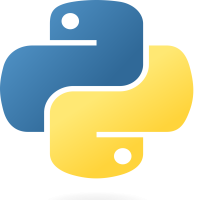
Python - Loop Control Statements
01-Feb-2024Learn to manage loop control statements in Python, including continue, break, and pass. Explore how these statements affect the flow of loops, allowing for more flexible and efficient program execution.
Introduction
Python's loop control statements offer ways to change a loop's direction of travel. The three primary loop control statements—break, continue, and pass—are examined in this material. Comprehending these assertions is essential for effective and adaptable loop implementation.
Break Statement
Whether or not the loop condition is still True, a loop can be broken early with the break statement. It's frequently used to break out of a loop when a particular requirement is satisfied.
Example :
for i in range(5): if i == 3:
break # This will exit the loop when i is 3 print(i)
Continue Statement
The continue statement is used to move on to the next iteration of a loop by skipping the remaining code for the current iteration. It is helpful in situations where certain iterations should be skipped in response to a given condition.
Example :
for i in range(5):
if i == 2:
continue # This will skip the rest of the loop and continue with the next iteration when i is 2 print(i)
Pass Statement
As a no-operation statement, the pass statement suggests that nothing should happen. When syntactically some code is required but no action is required, it is frequently used as a placeholder.
Example :
for i in range(5):
if i == 1:
pass # This will do nothing and continue with the next iteration when i is 1
print(i)
Notes
- Loop flow may be managed with flexibility thanks to loop control statements.
- To break out of a loop early, use break.
- The remaining code for this iteration is skipped when you press continue.
- The word "pass" is a stand-in for "do nothing."
Conclusion
Gaining knowledge of loop control statements improves your capacity to adjust how Python loops run. These statements enable you to design more effective and customized loops by giving placeholders, stopping a loop early, and skipping particular iterations.


